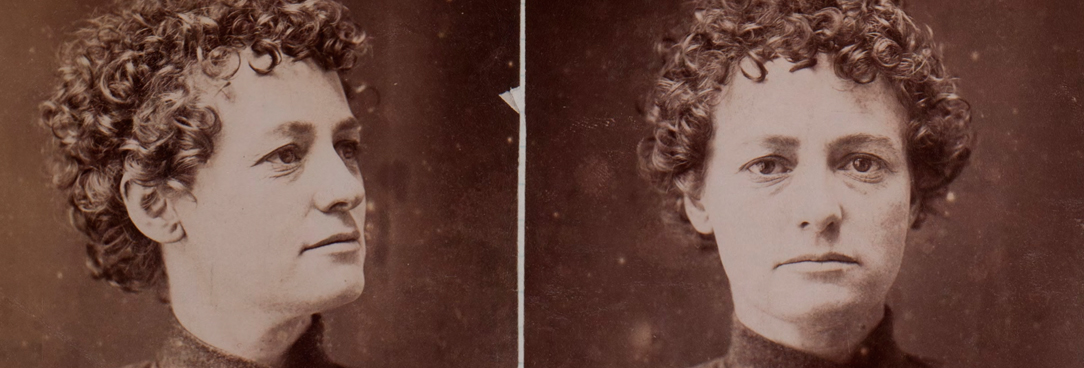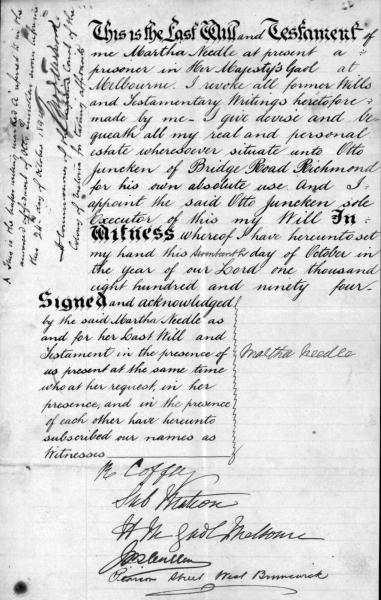
Author: Tara Oldfield
Senior Communications Advisor
“There’s like a dark needle or a nail that lives at the back of all of our heads, and that’s your fear.” Sandra Oh.
Marvellous Melbourne wasn't all elegant balls and leisured promenades down Collins Street, especially if you were a woman.
Now showing at the Old Treasury Building until June 2020 is an exhibition entitled Wayward Women? and as the name suggests the exhibition introduces some characters who don’t fit the stereotype of demure Victorian womanhood.
One of the most well-known names amongst them is that of Martha Needle.
Content warning: this post is related to death and murder and may be upsetting for some readers.
Martha Needle’s grim story
After a rough childhood in South Australia, marred by violence and abuse, Martha married Arthur Needle and moved with him to Melbourne to start a new life.
Throughout the next decade of marriage, the pair had three children Mabel, Elsie and May. The family of four slowly dissolved. Mabel died in 1885, followed four years later by Arthur. Elsie died in 1890 and lastly, May, in 1891. All seemingly died of natural causes with no suspicion attached to Martha at all.
After May’s death, Martha moved to Richmond to keep house for Otto and Louis Juncken. She and Otto soon became engaged, much to the concern of Louis who found her behaviour increasingly worrying. Martha would become unresponsive for long periods and on one occasion walked the streets in only a skirt searching for her dead children.
By May 1894 the worried Louis was dead. Barely one month later, Otto’s remaining brother Herman also fell ill. Herman’s doctor did what other doctors hadn’t. He arranged an analysis of Herman’s vomit revealing rat poison. The doctor called the police who set a trap to catch the culprit in the act. As the police hid outside, Martha was seen making a poisoned cup of tea. Upon learning of the deaths of her family members, police then exhumed their bodies. All contained traces of arsenic from rat poison.
Martha was found guilty of murder and sentenced to death. She was hanged at Melbourne Gaol on the 22nd of October 1894.
Martha in the archives
Martha’s prison register photograph from our collection features as part of the Wayward Women? exhibition at Old Treasury Building. You can also find Martha’s capital case file, sentence file, inquest, probate and will within our collection. Simply type “Martha Needle” in the search bar.
Martha made famous
Many writers, historians and true crime buffs have been trying to make sense of Martha’s crimes ever since - such as in the 1949 newspaper article below.
In more recent years, Martha has been the subject of a few books including:
- The secret art of poisoning: The true crimes of Martha Needle the Richmond poisoner, Dr Samantha Battams (2019)
- Martha Needle: The spellbinding story of Australia’s most infamous femme fatale, Brian Williams (2018)
She was also recently the subject of an Australian True Crime Podcast episode.
Her story was also once even performed as a play entitled The eye of Martha Needle.
Learn more about the Wayward Women? exhibition at Old Treasury Building here.
Material in the Public Record Office Victoria archival collection contains words and descriptions that reflect attitudes and government policies at different times which may be insensitive and upsetting
Aboriginal and Torres Strait Islander Peoples should be aware the collection and website may contain images, voices and names of deceased persons.
PROV provides advice to researchers wishing to access, publish or re-use records about Aboriginal Peoples



